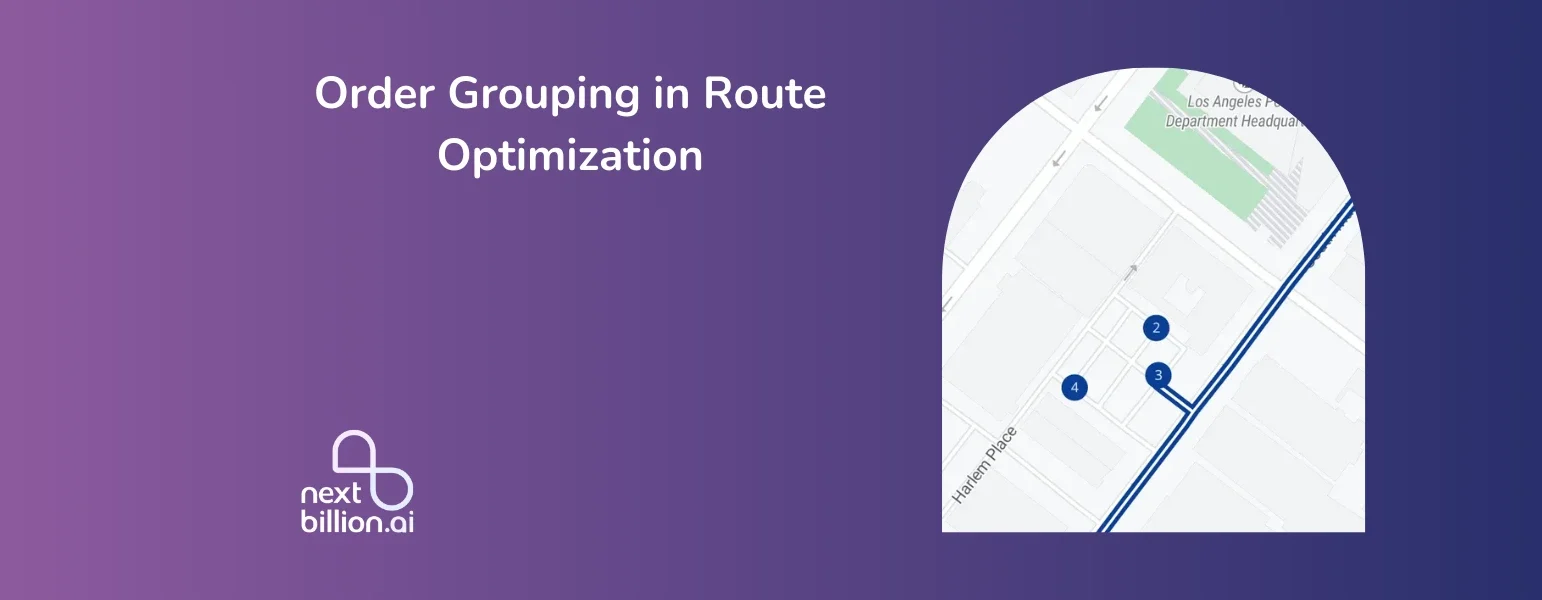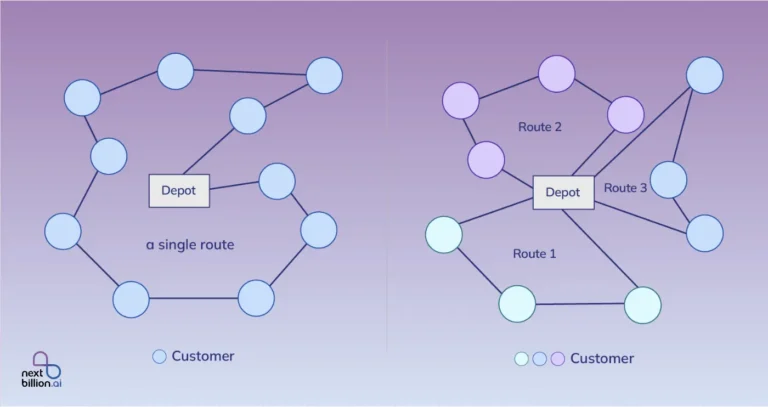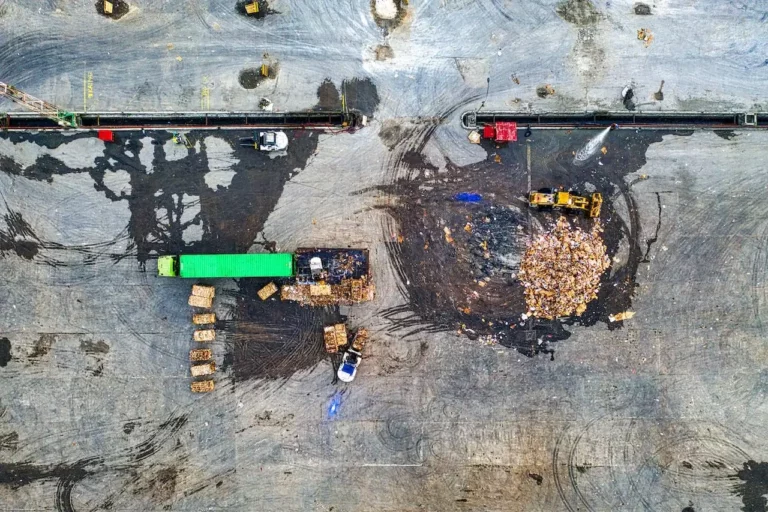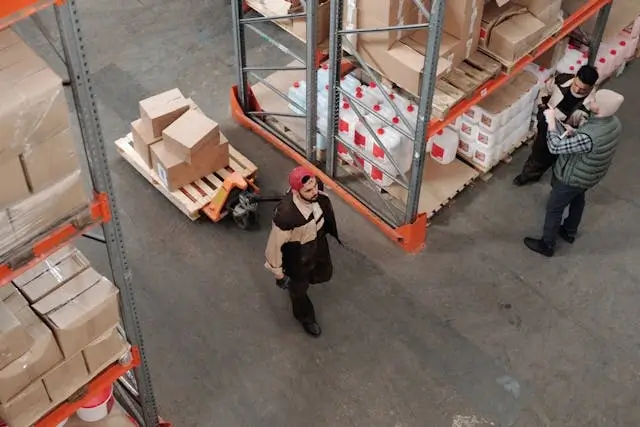
Table of Contents
Table of Contents
Order grouping is a feature in route optimization that allows nearby deliveries or tasks to be bundled into a single stop. Rather than creating a route that directs drivers to every individual location, functions within a specified radius are grouped together, and the driver only needs to stop once. The driver can then walk to nearby places to complete multiple deliveries or tasks.
This feature is handy in dense urban areas or places with limited vehicle access, such as apartment complexes, high-rise buildings, and busy downtowns. By consolidating deliveries or tasks within walking distance, companies can streamline operations, reduce fuel consumption, and improve delivery speed.
Practical Applications of Order Grouping
Order grouping proves invaluable across various industries, offering a significant boost in efficiency and cost savings. By consolidating deliveries or tasks into fewer stops, businesses can streamline their operations, reduce fuel consumption, and enhance service speed. Here’s how different sectors benefit from implementing order grouping.
E-Commerce and Last-Mile Delivery
Order grouping plays a pivotal role in optimizing last-mile delivery for e-commerce companies, especially in densely populated urban areas. Instead of making separate stops at each customer’s location, drivers can cluster deliveries into a single stop and fulfill multiple orders on foot.
Use Case: Delivering online orders to customers in densely populated areas.
Benefit: Drivers can park in one location and deliver multiple orders on foot. This reduces fuel costs, improves delivery speed, and ensures more efficient use of time and resources.
Food Delivery (Restaurants and Groceries)
Food delivery services, particularly those in urban environments, face challenges like traffic and parking. Grouping nearby food orders ensures quicker, more efficient deliveries while maintaining the quality of the food.
Use Case: Delivering multiple orders within a small area, such as an apartment complex or office building.
Benefit: Grouping nearby orders reduces the need for multiple stops and ensures food arrives hot and fresh. Drivers can deliver to multiple customers in one trip, minimizing parking difficulties.
Courier and Postal Services
In crowded urban areas, postal and courier services face obstacles such as traffic congestion and parking limitations. Grouping deliveries allows workers to reduce driving time and complete more tasks within a single stop.
Use Case: Delivering letters or packages to multiple addresses in a residential block or street.
Benefit: In busy urban areas, postal workers can reduce idle time by parking once and delivering multiple packages on foot. This is particularly useful in areas with heavy traffic or limited parking options.
Field Services (Maintenance and Repairs)
Reducing travel time between service locations is crucial for technicians providing maintenance services. Grouping service calls by proximity allows them to focus more on their tasks and less on driving between sites.
Use Case: Performing maintenance or repairs on multiple units in an apartment or commercial building.
Benefit: Technicians can group nearby service calls, reducing travel time between units and making it easier to manage equipment and tools for multiple tasks in one stop.
Residential Waste Collection
Waste collection services can be optimized by grouping stops within a neighborhood, minimizing vehicle movements and making the collection process faster and more efficient.
Use Case: Collecting waste bins from multiple homes in a compact neighborhood.
Benefit: Waste collection workers can park in one spot and gather bins from nearby homes on foot, reducing the number of vehicle trips and avoiding narrow or difficult-to-navigate streets.
Retail or Department Store Deliveries
Deliveries to multiple stores within a shopping mall or complex can be time-consuming without order grouping. Grouping deliveries allows drivers to complete several drop-offs without having to search for parking multiple times.
Use Case: Delivering goods to multiple stores within a shopping mall or complex.
Benefit: Drivers can park in a central location and deliver to multiple stores on foot, saving time and reducing the hassle of navigating loading docks or parking lots.
High-Density Residential Deliveries
Delivering packages to individual units in high-density residential buildings can be streamlined by grouping stops, enabling drivers to efficiently complete deliveries without repeated trips to the vehicle.
Use Case: Delivering packages to multiple units in a condo or apartment building.
Benefit: Grouping deliveries allows drivers to park once and deliver to several units without returning to their vehicle, making the process more efficient.
Newspaper and Magazine Distribution
Distributing newspapers or magazines can be particularly time-sensitive. By grouping deliveries within a neighborhood, distributors can complete their routes faster and reduce time spent driving between delivery points.
Use Case: Delivering newspapers or magazines to homes or businesses in a neighborhood.
Benefit: Delivery personnel can park in a central spot and distribute publications on foot to multiple locations, reducing the time spent driving between individual homes or businesses.
Order grouping provides a practical, scalable solution for industries requiring frequent, localized deliveries or service calls. By reducing unnecessary vehicle movements, it not only enhances operational efficiency but also contributes to sustainability goals by cutting down fuel consumption and carbon emissions.
How Does Order Grouping Work?
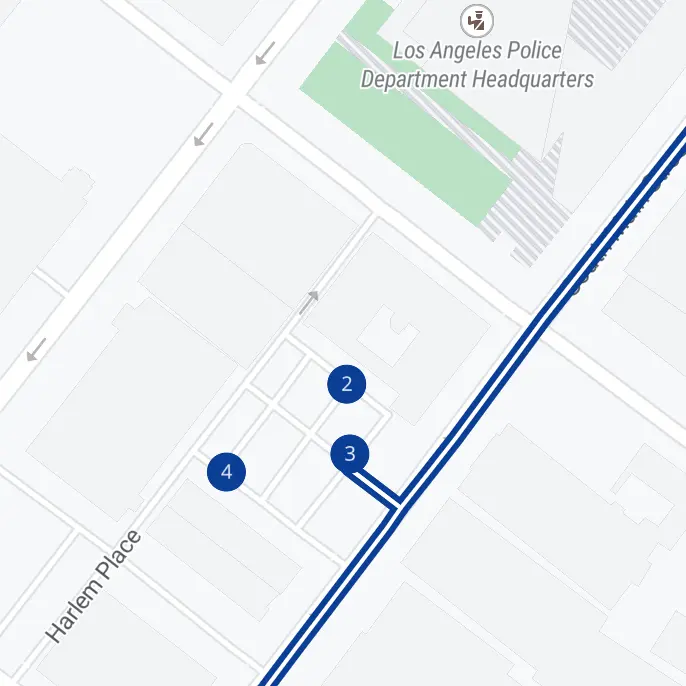
Users of route optimization software set a diameter within which tasks are grouped. The optimization engine checks for any tasks that fall within the designated area around each task. Once the optimizer identifies clusters of tasks, they are grouped into one stop.
For instance, in a residential area with several deliveries, the optimizer will consider whether multiple orders can be served by parking once and walking to nearby homes or businesses. After grouping tasks, the route is planned with fewer overall stops, making the process more efficient.
Why is Order Grouping Important?
Implementing order grouping in route optimization offers numerous advantages for businesses, drivers, and even customers. It addresses challenges in high-density areas, reduces vehicle wear, and helps drivers navigate faster through busy streets.
Order grouping tackles the common pain points in logistics by making route planning smarter and more efficient.
1. Efficiency in Dense Areas
In high-density urban areas, traffic congestion and limited parking present significant challenges for delivery drivers. Order grouping helps minimize time spent on the road by allowing drivers to park once and complete multiple deliveries on foot. This is especially useful in areas with heavy traffic or in places where maneuvering a vehicle is difficult, such as narrow streets.
2. Reduced Vehicle Wear and Tear
Frequent stops and short trips between nearby locations lead to wear and tear on vehicles, increasing maintenance costs. By grouping orders, drivers spend less time driving between short distances, reducing the strain on the vehicle and extending its lifespan. This also leads to fuel savings, as less fuel is consumed by the vehicle when multiple deliveries are completed in one stop.
3. Increased Delivery Speed
When deliveries are consolidated into fewer stops, drivers spend less time navigating through traffic and more time delivering orders. This speeds up the overall process, allowing more deliveries to be completed in a shorter amount of time. In particular, drivers can avoid small turns and frequent stops that slow down delivery speed.
4. Better Customer Experience
Customers benefit from faster deliveries and more reliable service when order grouping is implemented. Unexpected traffic delays or parking issues are less likely to impact delivery times when multiple orders are grouped into a single stop. This leads to quicker deliveries, which can improve customer satisfaction, particularly in sectors like food delivery.
5. Environmental Impact
Grouping nearby tasks reduces the number of vehicle trips required for deliveries, leading to lower fuel consumption and reduced carbon emissions. This is particularly beneficial for companies aiming to meet sustainability goals. By cutting down on vehicle use, businesses can minimize their environmental footprint and contribute to greener logistics.
6. Flexibility for Large Deliveries
For drivers delivering to multiple customers within a large building or complex, such as a high-rise apartment or a shopping mall, order grouping eliminates the need to repeatedly enter and exit the vehicle. Drivers can park once and complete all deliveries within the building, saving time and effort.
Getting Started with Order Grouping in Route Optimization
Order grouping is an essential feature in route optimization, especially for businesses operating in dense urban environments. It reduces the number of stops, improves delivery speed, and helps reduce fuel consumption and vehicle wear.
By consolidating multiple tasks into fewer stops, companies can achieve operational efficiency, reduce costs, and improve customer satisfaction. For industries ranging from food delivery to field services, implementing order grouping can make a significant impact on the bottom line.
About Author
Rishabh Singh
Rishabh Singh is a Freelance Technical Writer at NextBillion.ai. He specializes in Programming, Data analytics and technical consulting, turning complex tech into clear and engaging content.





